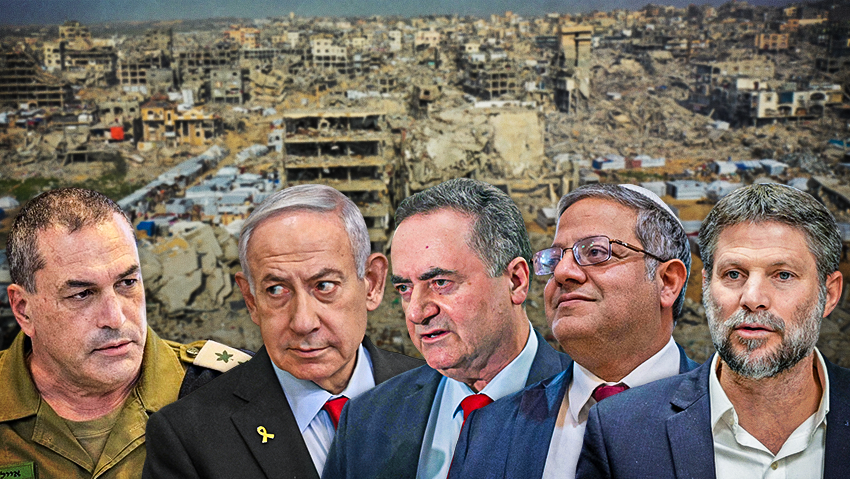2 View gallery


(Photo: Shalev Shalom, Yair Sagie, Ahmad Gharabli/AFP, IDF Spokesperson, Reuters/Mahmoud Al-Basos)
We can speculate that the stated plan may never be fully carried out but the fallout—a diplomatic storm abroad and growing polarization at home—will come at a heavy cost for all of us.
The cabinet’s decision is driving a worsening crisis between the military leadership and the government effectively using the IDF as a political pawn.
Chief of Staff Eyal Zamir has openly opposed the plan calling it a strategic trap and a mistake that endangers the hostages. He and others involved understand how unsustainable it is to attempt to forcibly move nearly a million Palestinians from their homes when much of the Gaza Strip is already in ruins and there is nowhere safe to go.
Israel is already allowing day-long humanitarian pauses in the fighting reflecting the immense pressure on troops and the grave limitations of the situation on the ground.
Zamir, who has no intention of resigning, showed the cabinet the severe fatigue among soldiers, the number of wounded and the erosion of the international legitimacy so crucial for the promised victory.
This was a wake-up call—not only for the ministers but for everyone who believes in easy or magical solutions to complex problems. His fundamental question remains: Who will take responsibility for all of this?
Zamir offered the cabinet an alternative: a gradual siege, targeted raids and the pursuit of a hostage release through compromise. His plan is not perfect and may not guarantee a decisive victory but it is a more realistic path forward.
If the cabinet’s true intention is to secure a partial hostage release, their declared plan to conquer Gaza is excessive and likely unrealistic. What is the purpose of paying the high price—putting hostages at greater risk, increasing IDF casualties and weakening the military’s operational capacity?
“Ultimately, it is the enemy who must be worn down—not the IDF or the state of Israel,” Zamir told the ministers.




